Pineridge Chippers of Alberta, Canada are a harvesting, haulage and chipping company processing around 1 million tonnes of timber each year
Forestry is a fascinating industry and it is always interesting to explore the different harvesting techniques used in other countries. This issue is enlightening as it sees us taking a trip across the pond to catch up with Andrew Peters, a Canadian logging contractor, and one of the co-owners of Pineridge Chippers. Pineridge Chippers operate out of La Crete in Northern Alberta, Canada and specialise in wood chipping, cut to length logging, full tree logging and biomass.
Like many forestry workers Andrew is a second generation logger; his father owned and operated a log truck hauling lumber to the mills, and as a child Andrew spent much of his free time with his dad and loved any opportunities he had to go out to harvesting sites to see the logging equipment cutting and extracting timber. He grew up in the small hamlet of La Crete (The Ridge), which has a population of almost 2,500 people and temperatures ranging from -50°C in mid-winter to 30°C in summer.
The surrounding area is, in Andrews’s words, “an ocean of trees.”
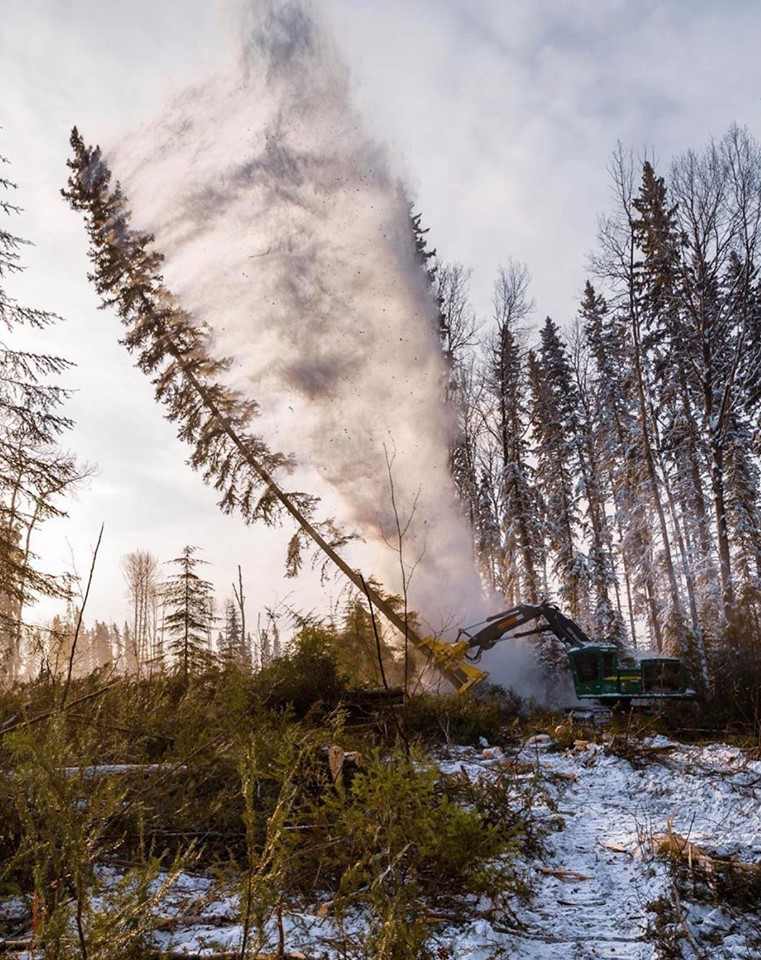

“Growing up I loved the outdoors – my dad taught me how to hunt and I grew up on Moose meat and home grown vegetables. In the summer when people head south for warmer weather I prefer to head north into the Territories, it’s such a beautiful area.”
As Andrew approached his 16th birthday he formed a grand plan: quit school and make money logging. Unfortunately though, finding work was not as easy as he thought. Work was scarce and it wasn’t till he was 18 that he had the opportunity to join his girlfriend’s (now his wife) father’s logging company. He joined Pineridge Logging as a maintenance hand and spare equipment operator within the portable wood chipping division of the company and gained valuable experience in tree length logging, construction and portable wood chipping.
“A lot of the logging is carried out in the winter months, and some areas can only be logged in sub-zero conditions due to muskeg.”
Muskeg is the term used in Canada and Alaska for particularly wet boggy areas with acidic soil. It is quite common in Arctic, boreal and northern climates.
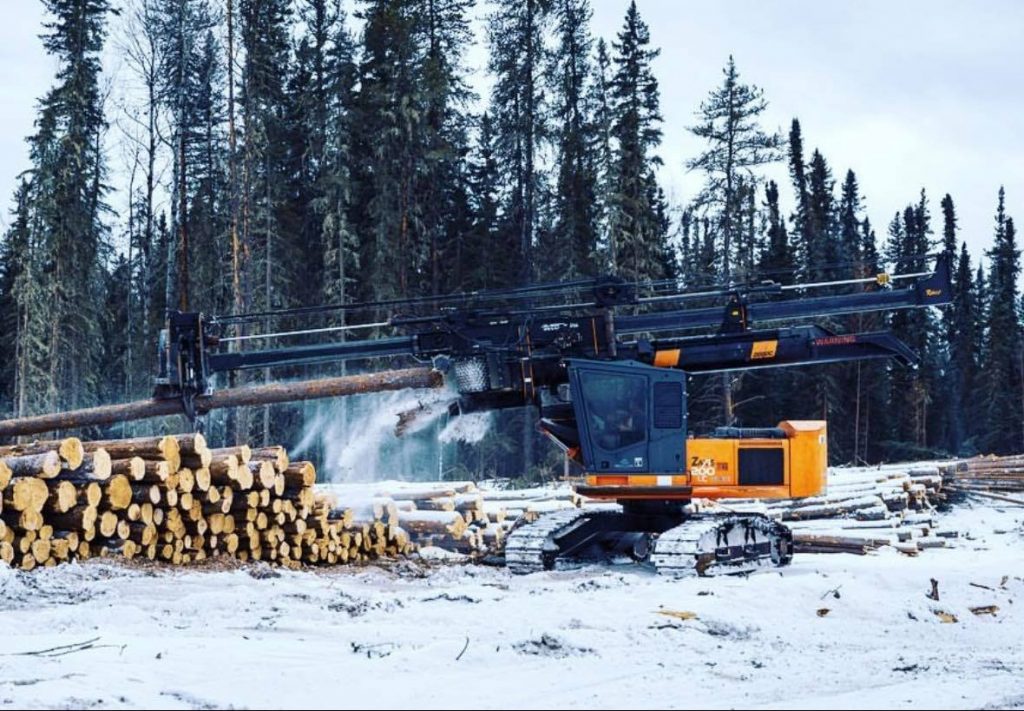

“We stop logging in the winter (only for a week or two) when temperatures get below -40° as it can cause a lot of damage to the equipment. Summer logging can be challenging as the warmer weather can bring a lot of rain, so I worked more on construction in the summer.”
Andrew worked for Pineridge Logging until 2012, when he was offered a share in the business. The shareholders (Darren Wald, John Peters and myself handle the day to day running of the company with Jake Froese and Pete Peters indirectly involved with running the daily operations but are an integral part of our success) then decided to form a new company called Pineridge Chippers Ltd (PRC), which has expanded steadily over the years. Their clients are offered a number of services including a CTL logging company, the chipping division, a partnered transport company, and the company is working to establish a real estate company which should be up and running by this spring.
The company has a workforce of 225 throughout the different divisions. The majority of the workers live in the surrounding area; others who are not local are still Canadians and come from New Brunswick and Prince Edward Island.
I was interested to find out about the training necessary and whether operators need to be certified to operate equipment.
“All our operators are professionals having undergone complete equipment training, company orientations, WHMIS (Workplace Hazardous Materials Information System) and TGD (Transport of Dangerous Goods) certification, job specific training, and first aid.
We are an aggressive company who are always finding new projects and this requires a large workforce. We spend a lot of time training new operators every year, but this is a good thing as we can mould the operators into our way of working. We are looking to hire a full-time employee whose sole job will be training new employees and retraining existing ones. We have started to offer training online as well.
I have attended local schools to give presentations on our industry to encourage youngsters to consider logging as a career. We have had a film crew onsite from the States and they filmed three episodes called Ice Loggers. I show clips of these to the students so that they get a true understanding of the business.”
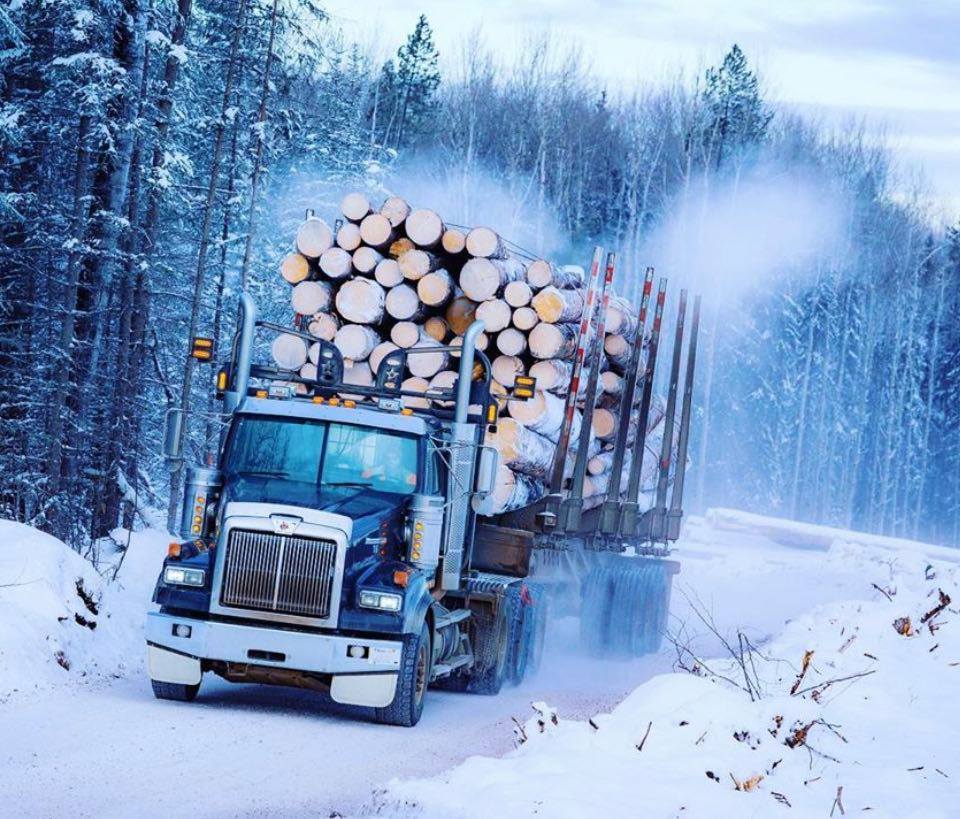

Another area I wanted to explore was which species of trees are best suited to the extreme differences in temperatures from winter to summer.
“Aspen and Sitka Spruce are our main species; 10-15 years ago, Aspen was classed as a weed and was often piled and burned – it was only cut so we could get to the spruce. Today, Aspen is used for pulp to make paper and OSB boards and the Sitka Spruce is used for lumber.
Aspen is very fast growing even in this environment, and there is no need to replant a harvested Aspen block because in a couple of years it will have grown back so thick you can’t see through it. The Spruce is replanted manually by the companies who harvest it.”
I also asked Andrew what equipment he had experience on:
“I’ve operated skidders, dozers, road graders, portable chippers and driven trucks. I have cut three trees with a feller buncher but that ended miserably; it was a long time ago but the operator has never let me forget!”
“I manage special projects for our business, together with my partners I build business plans and proposals. All my other time, which is quite significant, is spent working out in the woods with the crew.”
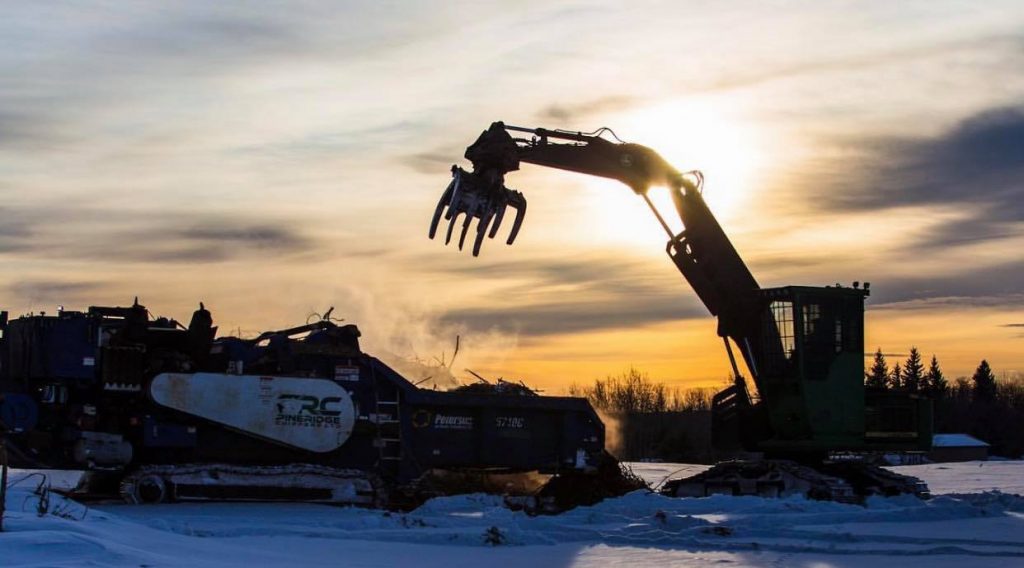

I usually associate Canada with Tigercat so I had the opportunity to find out first-hand what equipment PRC were using and, with such a large workforce, there had to be a big pool of equipment so I also wanted to know the different types of logging equipment they operated.
“We run both John Deere and Tigercat, they are the common brands around here and both look after us really well. We have more John Deere’s than any other brand and they give us an excellent service.”
In terms of detail, the units in use are as follows:
· 10 Feller Bunchers – 1 x JD 903K, 3 x JD953K, 1 x JD 953M, 4 x Tigercat X870D, 1 x Tigercat 870G
· 5 Log Loaders – 1 x JD 2554D, 1 x JD2154D, 1 x Hitachi ZX290F, 1 x Tigercat 880D 1 x Tigercat 875
· 6 Chippers – 2 x Morbark 2755, 4 x Peterson 5000G
· 2 Horizontal Grinders – 1 x Peterson 4710B, 1 x Peterson 5710
· 5 Processors – 3 x JD 2154D, 2 x 2154G with Warratah heads
· 14 Skidders – 748H, 848H and 848L’s all from John Deere
· 3 x Kenworth T800 Winch Trucks
· 12 x Caterpillar Crawlers
· 3 x Caterpillar Graders
· 3 x Excavators which are used for road freeze down and building
As Andrew says, “all the gear a guy needs to cut trees.”
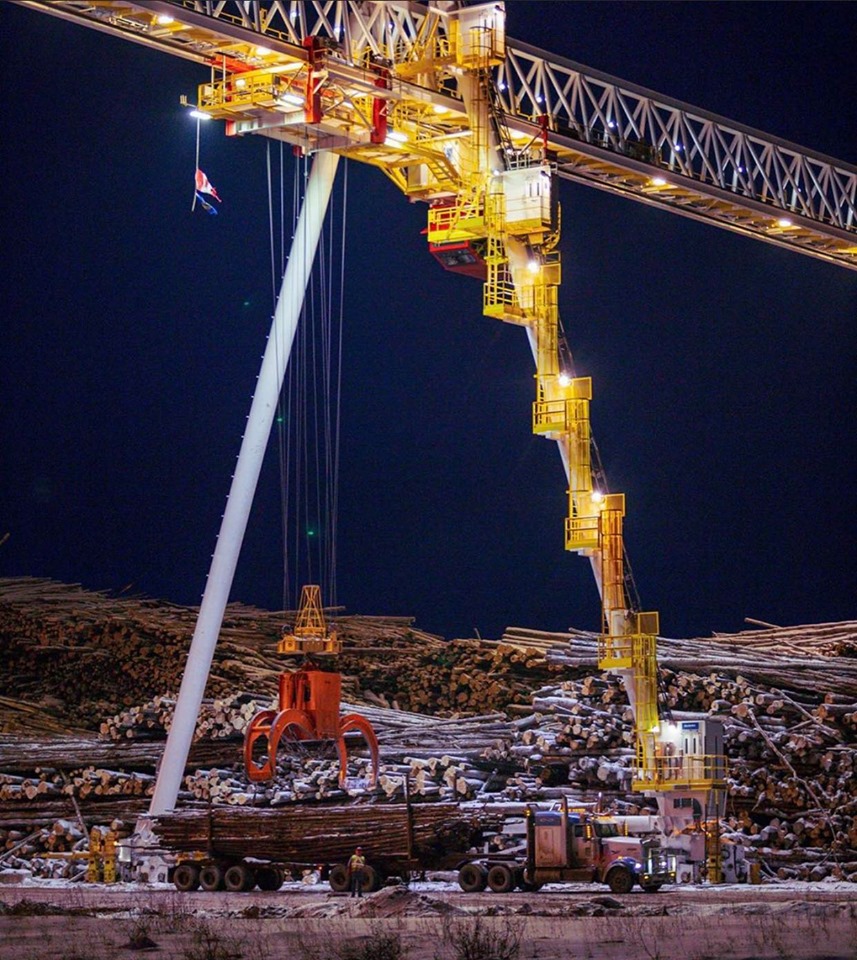

“We have two mechanic shops and 10 service trucks that look after repairs and maintenance. We keep a lot of our own parts inventory, we have to in order to be efficient and keep production up. We supply more in our parts inventory than some of our suppliers do.”
What are the main local industries and biggestemployers?
“Oil and gas are down just now so logging is probably the biggest employer. We have five sawmills/wood processing plants within an hour of here which take in either lumber or OSB.”
Given the size of the company it would take a significant amount of timber to keep it working all the time, so Andrew explained more about the ins and outs of PRC.
“We work all over Alberta and parts of British Columbia (BC). This fall we were working in three provinces at the same time – Alberta, BC and Saskatchewan – and that really fires me up.
This year our goal is to harvest 1,000,000m³ and we will hit that fairly easily. We tend to work five and occasionally six days a week on double shifts of 12 hours. Most operators are off on Saturdays and Sundays. We work on contract to the sawmills and they assign blocks of timber to their contractors; we are paid by the m³, tonne or bone dry tonne depending on which mill we are delivering to.
Every block harvested is planned around water courses, animal dens and birds nesting. We work alongside nature.
Our timber markets go up and down. Last year we got cut back mid-season, but fortunately we found more work which made up for it.
Rain and cold can affect our logging operations; I made the same mistake last year and tried to push through the cold and we ended up down with equipment damage when the temperature got warmer.
Our operations run for eight to nine months of the year – we use the break for rebuilding and maintaining equipment and preparing for start-up.
In the future, I can see us getting into more winter logging due to the frozen ground and pulp and OSB markets will stay strong due to the amount of Aspen forests.”
Finally it was time to ask the most important question: what does a busy Canadian logger do for leisure?
“I enjoy photography, the outdoors, camping, hunting, and fishing – I am a nature lover. On May the 3rd I’m going to Nunavut with Kyler Knelsen (he is worth checking out on Instagram) to film a Grizzly Bear hunt.
I occasionally like to escape on my own into the Caribou Mountains where you are totally isolated and there is no cell coverage. Last fall, a friend took me by helicopter and dropped me at a remote lake. I just love being out there in God’s country.”
Forest Machine Magazine is written and edited by a forest professional with over 40 years hands on experience. We are dedicated to keeping you informed with all the latest news, views and reviews from our industry.
To support us you can subscribe to our bi-monthly magazine which is delivered to your door from only £30 per year.
Subscribe here

